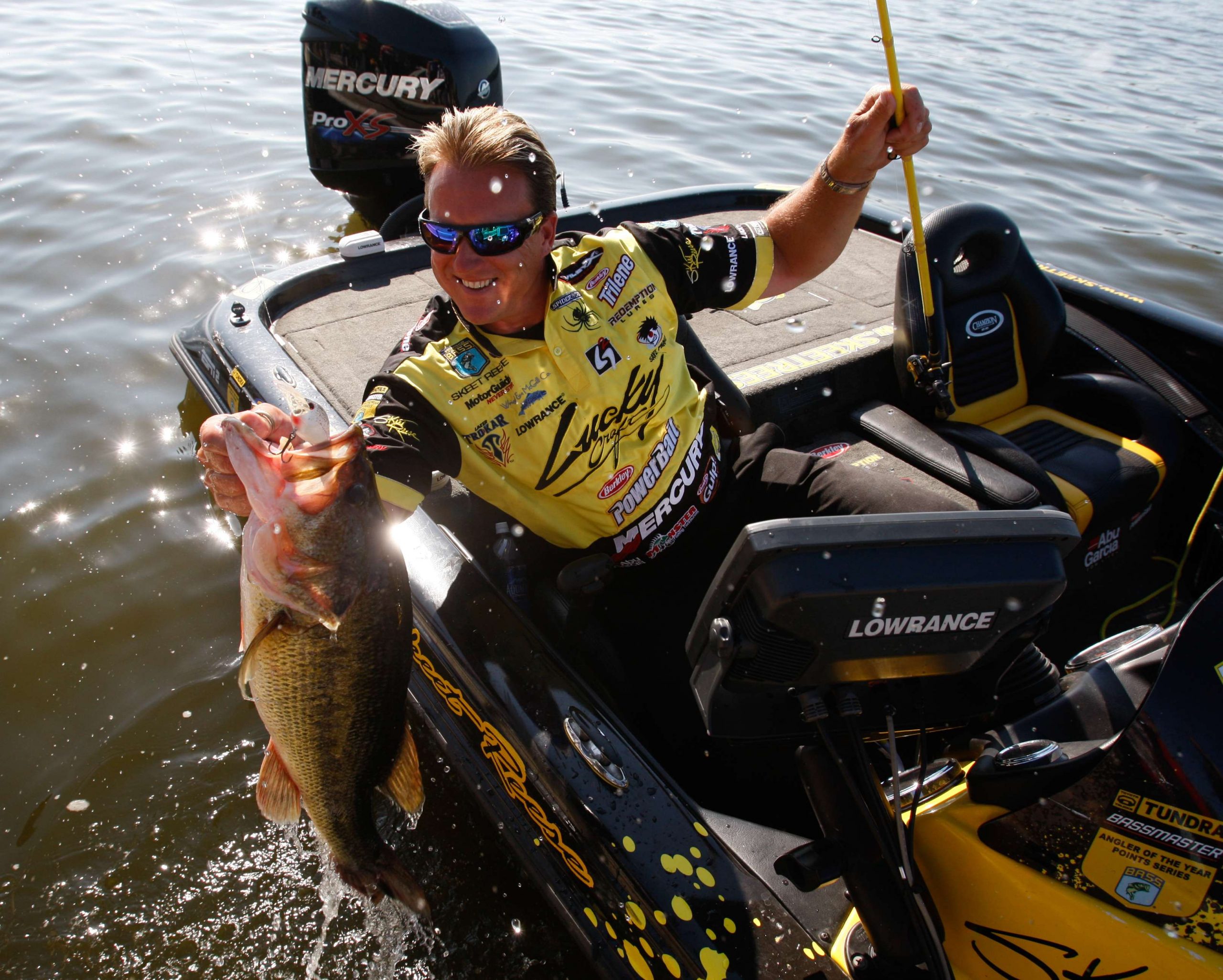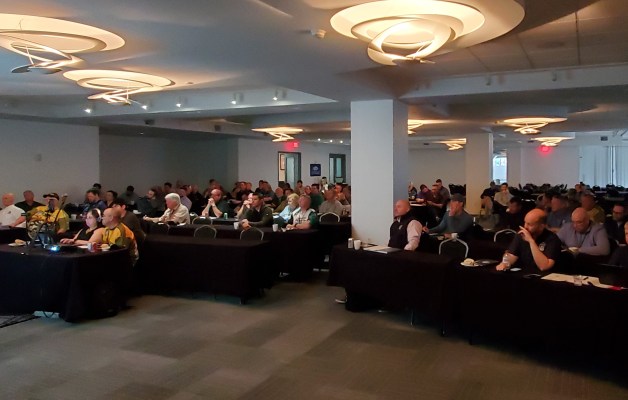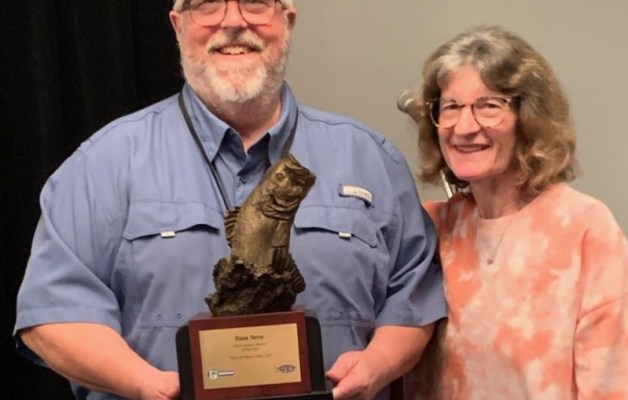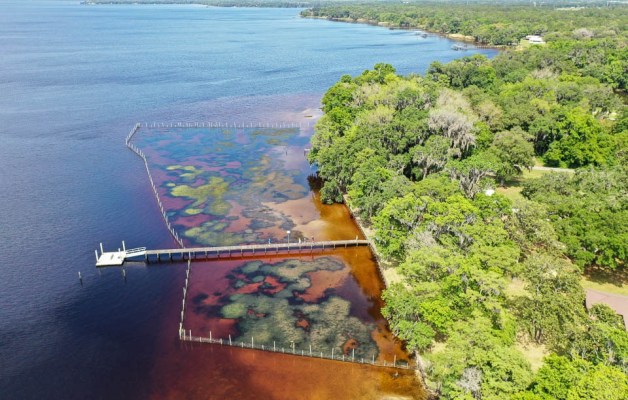
The following was contributed by Dr. Brett Hartis, program manager of TVA’s Aquatic Plant Management Program.
Lake Guntersville, site of this week’s Bassmaster Elite Series event, is well-known as being the big bass capital of Alabama, and some would argue its acclaim to span worldwide. Thousands of anglers flock annually to the nearly 70,000-acre lake for a chance to catch a double-digit largemouth.
Almost as famous as its bass, the Big G has a long history of aquatic weeds and, to most, the former seems to love the latter. Guntersville has also attracted an assortment of other users including recreational boaters, swimmers, waterfowl hunters and shoreline property owners who, together with the anglers, help support a critical economy for northern Alabama.
Aquatic plants provide the very foundation of the aquatic food web, but often invasive species like hydrilla can start causing more harm than good, thus calling for management. The amount of weeds considered ideal for one group may be considered detrimental by the other; thus was born the Tennessee Valley Authority’s Aquatic Plant Management Program.
Before the pros compete on Guntersville this week, we wanted to answer a few questions you might have about aquatic plant management and what that means, or might mean, for one of the nation’s most popular fishing destinations.
Q. I hear a lot about weeds. Invasive, native, blah blah blah, but aren’t they all the same? Grass is grass is grass, right?
A. Although most “grass” seems alike, there are many types of weeds, and the differences in the way they act compared to other aquatic plants can be as different as night and day. Species that are native to a system can be extremely beneficial to a fishery and often change their growth and distribution on an annual basis. This is most likely due to the fact that native plants have native enemies and diseases that keep their populations in check, so the aquatic food web they support can also stay balanced and help keep the bass supplied with a wide variety of food.
On the other hand, invasive species such as hydrilla and milfoil are non-native, and having originated from outside of the geographic range of Guntersville, exist here without their native predators and disease. Because of this, they can grow rapidly and spread throughout an entire system, out-competing the more beneficial species for habitat.
In a reservoir like Guntersville, native plants were few and far between in the first place, so invasive species, once introduced, can spread like wildfire. It often takes management to simply keep water bodies fishable when invasives are present, whereas natives can often be held in check by natural processes alone.
Sometimes, even the native plants can become a problem for a fishery. In the South, nearby agriculture and other sources can put excess nutrients into the system, leading to too many native plants.
You can learn more about identifying types of grass and how to fish in it here.
Q. Why do you kill the weeds? Grass equals bass, and if you kill the grass, what will happen to the fishery?
A. It certainly may seem counterintuitive to kill the weeds if you want to catch fish. However, too much grass can spell disaster for a fishery.
Research has shown that bass do best in lakes with about 20 to 40 percent total surface area cover. Lakes with greater than 40 percent coverage mean much more area for food to hide, which makes it hard for a bass to feed effectively.
Invasive species such as hydrilla and milfoil, without native predators and disease, can reach near 100 percent coverage. Research has shown that high densities of grass can actually lead to slower bass growth and wild swings in the food chain.
Maintaining a moderate level of vegetation is better for the fishery — and it’s better for pushing out trophy bass.
Q. How does TVA manage aquatic plants in Guntersville? I’ve heard of all different kinds of ways to kill plants.
A. There are a number of ways to manage aquatic plants, but which one can be used can vary from water body to water body. Currently, TVA uses both chemical and mechanical means to help manage aquatic plants.
Chemical, or herbicide, use helps to treat areas around public ramps, beach areas and parks, while the use of harvesters (mechanical) help to cut boat lanes out of ramp and residential areas so boats can reach deeper water where plants don’t grow.
Edges where harvesters and herbicide treatments are used create the “edge effect,” which allows fish to penetrate deep into the heart of mats where they can feed on prey that would have otherwise been unavailable if management had not taken place.
Q. What about the chemicals you use? I heard they may poison me and the fish I love, and that the bass will avoid the areas where they are used like the plague!
A. The “chemicals” used aren’t nearly as scary as they may seem. Herbicides by definition are “products used to kill or suppress unwanted plants” and were developed to only do harm to the plants they were intended to help control.
Aquatic herbicides are strictly regulated by the U.S. Environmental Protection Agency and go through decades of testing for adverse effects before they are ever considered for use. Only 13 aquatic herbicides are EPA-registered, compared to hundreds registered for agriculture. All in all, aquatic herbicides are just as safe as those used in production of some of your favorite foods and, when used at legal label rates, they are harmless to both you and the fish.
As for fish avoiding these areas, research has shown that treatment of areas can actually open up habitat for bass, creating that edge effect, and giving access for fish to forage after the weeds are gone.
Q. OK, but I’m still not convinced. Won’t these herbicides stay in the water forever? If you keep spraying, won’t they eventually reach toxic levels?
A. Herbicide toxicity is all about dose, dissipation and fate.
The dose required to kill target plants has been carefully studied. Some invasive plants require a lower dose than even native plants, so in some cases, native vegetation can be spared while invasive species can be removed.
Dissipation is described as the amount of time an herbicide will remain active in an area. As you might imagine, dissipation of aquatic herbicides in water can happen fast because moving water can quickly dilute a product. What isn’t diluted is taken up by the plants.
The fate, or the breakdown of an herbicide in water into simpler, inactive compounds is caused by light, water, microbial action or the binding of the chemical to plants or sediment. All herbicides are broken down by one or more of these processes, removing their active form from the system.
Q. So who decides how plants are managed on the Lake? I’m not sure I can trust a single group or person to make such an important decision.
A. Aquatic plants and how they would be managed have caused tension among user groups on Guntersville for decades. In February 1998, the problems came to a head, prompting stakeholders including anglers, boaters, homeowners, local industry, government, tourism councils and environmental groups to get together and form the Lake Guntersville Stakeholders Board. Anglers have a seat at the table when it comes to deciding the future for Guntersville. Former B.A.S.S. conservation director Bruce Shupp, who lives on Guntersville, was instrumental in the formation of this Board and is still an active member.
The board developed a process for involving local residents in addressing aquatic plant management issues that ensures all interests are represented, and sound science helps guide the Aquatic Plant Management Program.
This model has become so successful that it has been adopted at several other lakes as invasive species have continued to spread throughout the country.
Q. Where will TVA be spraying this year? I hear it is trying to get rid of all the grass.
A. While the exact treatment locations won’t be known until the plants start growing, there is a list of areas that are considered for management each year. TVA treats on an as-needed basis, so if those areas designated for potential treatment have aquatic plants at levels that may impact fishing and other recreation, then they will likely be managed.
If you plan to spend much time on the lake this summer, you will likely see TVA personnel daily in airboats surveying the for such areas and making sure that only areas in need are being managed.
TVA estimates there are currently 17,000 acres of aquatic plants in the lake, of which it managed only 7 percent in 2014, which is only 2 percent of the entire lake area.
While the amount of grass present in the lake may vary annually, TVA manages a very small percentage. TVA sends a management schedule to the Lake Guntersville Stakeholders Board, which posts the proposed schedule here.
For more information, contact TVA’s Public Land Information Center at 1-800-882-5263 or email plic@tva.com.




